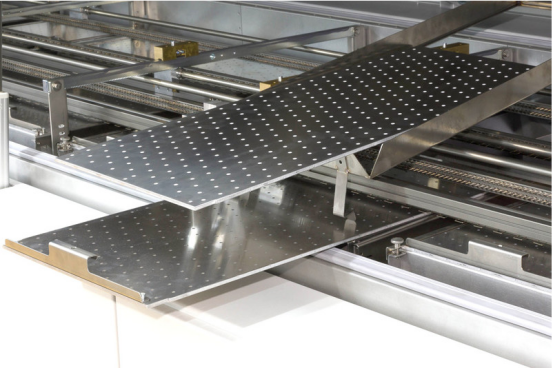Differences in characteristics between lead-free and lead-containing reflow soldering
Release time:2023-10-23Publisher:Jeenoce
Lead-free reflow soldering is the process of using the same temperature as tin lead soldering to treat lead-free materials. This approach has many benefits due to the low temperature. Equipment needs to be replaced, power consumption is low, and the risk of component damage is low. However, this process has high requirements for DFM and reflow soldering processes. It is necessary for users to have a good grasp of the adjustment principle of reflow welding process, compensation for errors, and so on. Jinos Electronics shares the differences in lead-free reflow soldering characteristics and performance.
Differences between lead-free reflow soldering and lead-based reflow soldering
The overall engineering of SMT lead-free reflow soldering is not significantly different from that of lead-based reflow soldering, but still includes: steel plate printing solder paste, device placement (including high-speed SMT placement of sheet shaped forced components and active placement of large shaped components with irregular parts), hot air reflow soldering, cleaning and quality inspection, etc. The difference is that the melting point of lead-free solder paste increases, the solderability deteriorates, the number of empty standing tablets increases, it is easy to explode, and humidity sensitive sealing parts are more susceptible to damage. It is necessary to change the concept and face it from scratch. In fact, based on years of mass production experience, it can be seen that the reasons that affect the quality of reflow soldering are only four key factors: solder paste itself, printing parameters, and the selection of reflow soldering furnace quality and reflow soldering curve. Those who excel are often able to handle problems.

The main advantages of lead-free reflow soldering are as follows
1. High precision: lead-free reflow soldering temperature control accuracy ± 2 ℃.
2. Powerful: Equipped with circuit board preheater, capable of lead welding, lead-free welding, chip aging, and red glue curing.
3. Internal and external arc design: Lead-free reflow soldering helps to evenly flow hot air, making the process curve more standardized.
4. Process automation: Lead free reflow soldering achieves fully automatic and precise lead-free soldering; The entire process curve is automatically controlled, and lead-free reflow soldering can complete double-sided or mixed soldering processes.
Lead free reflow soldering skills
The pollution of lead-free soldering flux is particularly significant due to the influence of high-temperature oxidation. Lead reflow soldering equipment is generally equipped with a flux management system to prevent the high-temperature airflow of many soldering fluxes from entering the cooling zone and condensing in the heat sink and furnace body, reducing cooling efficiency and polluting the equipment.
The lead-free reflow soldering system extracts high-temperature airflow containing a lot of flux from the preheating zone, reflow zone, and cooling zone, and after external cooling and filtration system, sends clean gas back to the furnace. Another benefit of this is to form a closed cycle during nitrogen maintenance, avoiding nitrogen consumption. This system has undergone significant changes and is generally difficult to upgrade. If the production volume is not large and the pollution level of the flux is low, it can be cleaned up on time without replacement. Vacuum nitrogen furnace
Lead free reflow soldering belongs to a type of reflow soldering. In the early years, the solder used for reflow soldering was all made of lead containing materials. With the deepening of people's environmental protection thinking, there is an increasing emphasis on lead-free skills (now known as lead reflow soldering). There are significant changes in materials, especially in solder. In terms of technology, the welding process has a significant impact. This is mainly caused by the characteristics of the solder alloy and the different corresponding fluxes.

